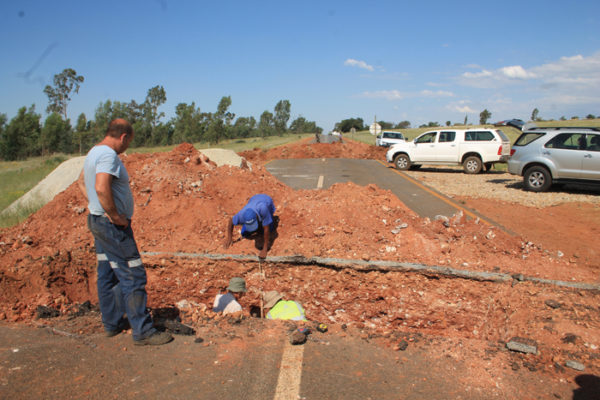Once the reconstruction of the road gets underway, it is expected that the contractor will be able to complete the work within six months.

Relief is in sight for motorists travelling on the R501 between Potchefstroom and Carletonville where a large sinkhole has caused severe disruptions to traffic.
The leaking water pipe that caused the sinkhole was quickly repaired and diverted.
SANRAL is now busy monitoring the situation to determine whether there are risks of further collapse.
Once the area has been declared safe it will be recommended that the road be re-opened.
SANRAL has appointed a firm of consulting engineers to undertake an assessment of the sinkhole and design a repair solution.
However, this process might take a few months to be completed due to the procurement processes as determined by the National Treasury’s regulations.
Once the reconstruction of the road gets underway, it is expected that the contractor will be able to complete the work within six months.
The sinkhole, which is about 10 meters deep, has caused major concerns about the safety of road users.
Sinkholes occur frequently in this part of South Africa, which is well-known for its extensive mining activities.
Although the road falls under SANRAL’s jurisdiction, the decision to close this section was taken by the Merafong District Municipality.
Quick facts about sinkholes
- Sinkholes are cavities in the ground that form when water erodes an underlying rock layer.
- They occur naturally through the gradual erosion of bedrock, the collapse of a cave roof or the lowering of the water table.
- In South Africa, sinkholes occur in areas underlain by dolomite rock. The instability might be the result of natural processes but are also caused by human activities such as poorly managed surface water drainage and groundwater level drawdowns.
- About 25% of Gauteng, as well as parts of the North West, Limpopo and the Northern Cape, are underlain by dolomite.

